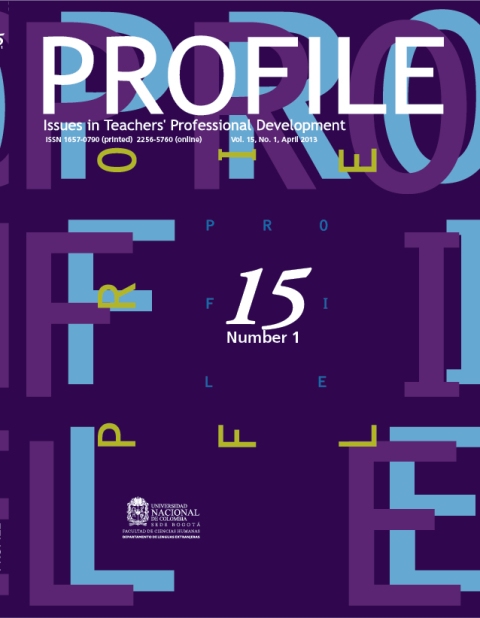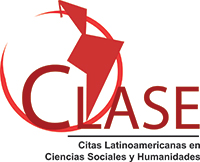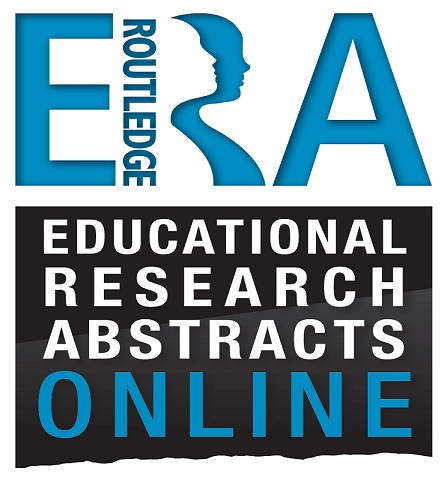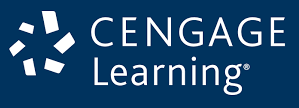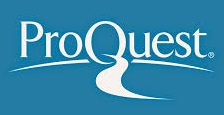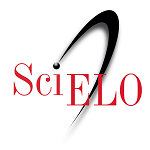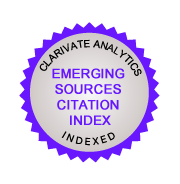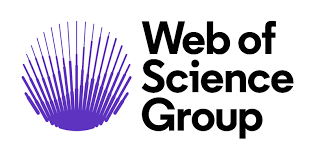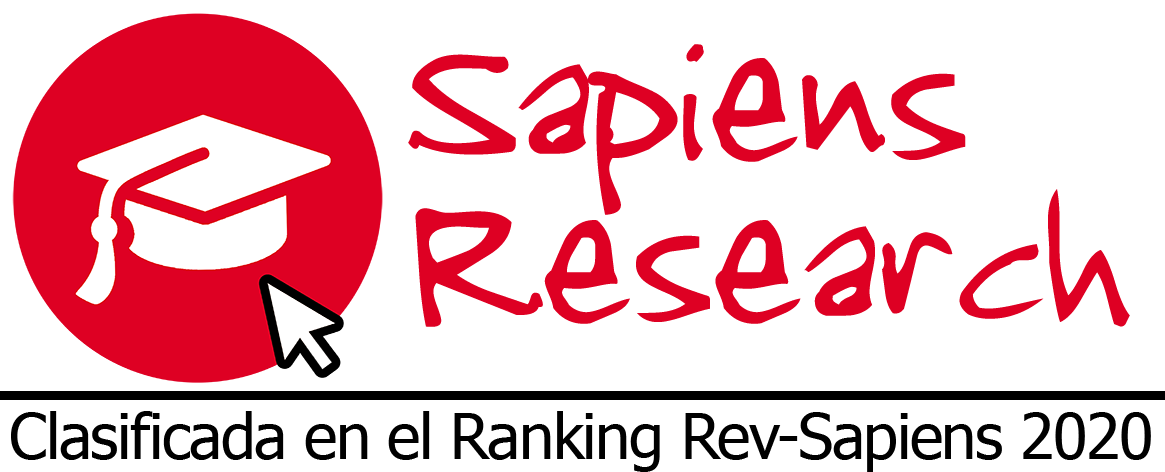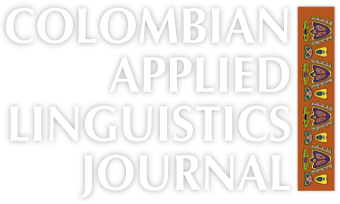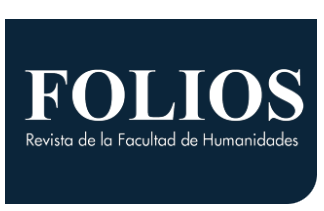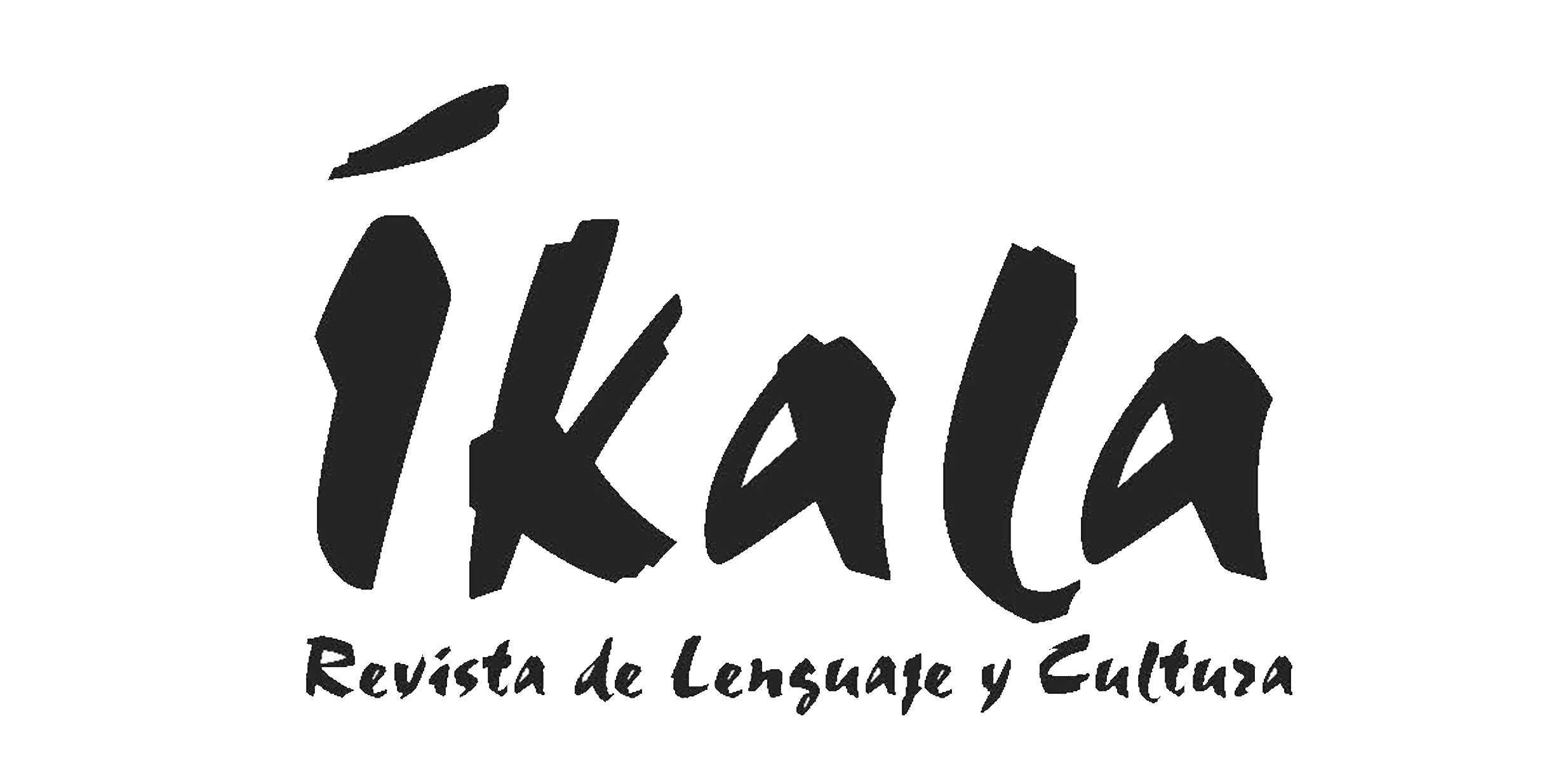EFL Teaching Methodological Practices in Cali
Keywords:
English as a foreign language (EFL), teaching methods, teacher profile, teaching practices (en)EFL Teaching
Methodological Practices in Cali
Prácticas metodológicas en la enseñanza de inglés como lengua extranjera en la ciudad de Cali
Orlando Chaves*
Fanny Hernández**
Universidad del Valle, Colombia
*orlando.chavez@correounivalle.edu.co
** fanny.hernandez@correounivalle.edu.co
This article was received on
April 30, 2012, and accepted on July 3, 2012.
In this article we aim at
showing partial results of a study about the profiles of English as a Foreign Language (EFL) teachers in both public and
private primary and secondary strata 1-4 schools in Cali, Colombia.
Teachers’ methodological approaches and practices are described and
analyzed from a sample of 220 teachers. Information was gathered from surveys,
interviews and institutional documents. The quantitative information was
processed with the Statistical Package for the Social Sciences and Excel while
the qualitative information (from a survey and focal interviews) was analyzed
hermeneutically. An analysis grid was used for the examination of institutional
documents (area planning, syllabi, and didactic materials). Teachers’
methodology (approaches/methods), lessons, activities, objectives, curricula,
syllabi and evaluation are analyzed in the light of literature in the field.
Finally, we discuss the implications of methodological approaches.
Key words: English as a foreign language (EFL), teaching methods, teacher profile, teaching practices.
En este artículo se presentan los resultados
parciales de una investigación sobre los perfiles de los profesores de
inglés como lengua extranjera que enseñan en colegios de
educación básica primaria y secundaria, públicos y
privados, de estratos 1 a 4 en Cali, Colombia. Se describen y analizan sus
enfoques y prácticas metodológicas a partir de una muestra de 220
docentes. Se obtuvo información cualitativa y cuantitativa por medio de
encuestas, entrevistas y documentos institucionales. La in-formación
cuantitativa se procesó con el software Statistical
Package for Social Sciences y Excel, mientras que la información
cualitativa se analizó hermenéuticamente. Se usó una
rejilla de análisis para el examen de los documentos institucionales
(planes de área, programas, y materiales didácticos). La
metodología (enfoques/métodos), clases, actividades, objetivos,
currículo, programas y evaluación se analizan a partir de la
literatura especializada en el campo. Finalmente, se discuten las implicaciones
de estos enfoques metodológicos.
Palabras clave: inglés como lengua extranjera, métodos de enseñanza, perfil docente, prácticas de enseñanza.
Introduction
It
is a fact that English has evolved as an inter-national language with great
importance in economic, political, and cultural contexts. In the educational
field, this importance is reflected in English as a Foreign Language (EFL)
language policies seeking global integration. In Colombia, the National
Bilingual Program (NBP) represents the official policy which aims at
enabling all citizens to communicate in English with internationally comparable
standards (Ministerio de Educación
Nacional [MEN], 2006a, p. 3). The document Estándares básicos
de competencias en lenguas extranjeras: inglés (MEN, 2006) is the most
noticeable component of this program. It states that, by 2019, all students and
teachers will reach predeter-mined levels of English,
according to the Council of Europe’s Common European Framework of
Reference [CEFR] (Council of Europe, 2001) scale1: C1 for teachers of foreign
languages; B2 for professionals in other areas; B2 for English teachers at the
elementary level, B1 for students who finish the secondary level, and A2 for
teachers of other areas at the elementary level.
However, the official announcement of this bilingualism policy is not
enough to guarantee its enactment. More knowledge about the context in which
the policy is to be applied is still required. In regard to this need, a group
of researchers from Universidad del Valle and
Universidad San Buenaventura carried out a macro-project which intended to describe
and analyze critically the conditions of implementation of the NBP in Santiago
de Cali, Colombia. This project comprised ten subprojects addressing school infrastructure,
EFL teachers, students and parents, respectively. One of the subprojects intended
to establish the English teachers’ demographic, socio-economic and
academic profiles. The academic profile considered initial teachers’
education, updating, language proficiency, and methodology. This latter is the
focus of the present paper.
The importance of a study in this field lies in that it shows, on the
one hand, teachers’ conceptions about foreign language, its learning and
its teaching; on the other hand, it allows assessing teachers’ practices
in the light of current tendencies of EFL teaching while it also allows
evaluating the conditions for the implementation of the PNB. This means that
this study casts light not only on the teachers’ practices but also on
their conceptions.
Theoretical Perspectives
Understanding language
teachers’ methodological conceptions and practices requires reviewing conceptual grounds mainly in
relation to methodology, method, approach, curriculum, and syllabus.
English
Teachers’ Methodological Orientations
Since
the notion of “method” was established from the direct method
(Richards & Rodgers, 2001, p. 14), almost a century of methodological
controversy took place. That discussion has currently faded, after its peak
between the 1950s and 1990s. Originally, methodology is knowledge about
methods, the theory about teaching practice. For Brown (1994a, p. 51),
“methodology is the study of pedagogical practices in general. Whatever
considerations are involved in ‘how to teach’ are
methodological.” According to Rodgers (2001, p. 1), “a more or less
classical formulation suggests that methodology links theory and
practice.” In turn, method is a more or less prescriptive set of
ways of doing things: procedures in terms of teaching strategies, techniques
and activities, altogether with stipulations about contents and the functions
of teachers, learners, and materials. Method refers to the practical
side of teaching while methodology is concerned with the comprehension
of methods.
Taking
Anthony’s ideas, Richards and Rodgers (2001, p. 20) refer to approach
as “theories about the nature of language and language learning that
serve as the source of practices and principles in language teaching.”
Thus, approaches are on the theoretical side of the continuum, while methods
are on the practical end. However, it is necessary to tell methods apart from
approaches, which are general in nature and do not refer to specific ways of
doing things in the classroom (Anthony and Mackey, as cited in Richards &
Rodgers, 2001; Pennycook, 1989; Richards, 1990;
Holliday, 1994; Brown, 1994a, 1994b; Richards & Rodgers, 2001). Approaches
contribute to the theoretical support for methods, which are more or less their
realization.
As
our main purpose in this article is to present the findings of our research
regarding the methodological orientations and practices of teachers of English
in Cali, we will not dwell on the historical account of the most important
methods and approaches to language teaching, which constitutes a good deal of
the modern history of language teaching and has occupied a significant part of
applied linguistics literature (Kelly, as cited in Richards & Rodgers,
2001; Stevick, 1980, 1998; Howatt,
as cited in Richards & Rodgers, 2001; Brown, 1994a, 1994b; Richards &
Rodgers, 2001; Celce-Murcia, 1991; Germain, 1993; Larsen-Freeman, 2000; Kumaravadivelu,
1994, 2001, 2003). We will only list and situate methods and approaches
briefly:
• The grammar-translation or classic method: The teaching was carried out through the translation of classic literary excerpts and the explanation of structures of the target language in contrast with the ones from the mother tongue. This pre-scientific methodological orientation prevailed between the 1840s and the 1940s but has still had a widespread survival to date.
• The series method: This method advocated that it is more important to learn sentences to speak than words; that verbs are the key elements in sentences, and that sentences are more easily learned when they form a narration. The idea was to have students memorize sentences in sequence, related to the same ‘theme’, teaching students directly—without translation—and conceptually—without grammatical rules and explanations, a series of connected sentences that are easy to understand.
• The direct or Berlitz method: The first method as such, developed at the end of the 19th century. Its basic principle was that meaning must be conveyed directly in the target language by means of demonstration and visual aids, which means avoiding translation.
• Oral approach or situational language teaching: Originating in the United Kingdom, in the 1920s, it was popular up to the 1960s. This approach to methodology was based on the orderly principles of selection, gradation and presentation of vocabu lary and grammar items.
• The Audio-Lingual Method (ALM), or Army method, or oral approach, or aural-oral approach or structural approach: This was a linguistics-based teaching method that focused on pronunciation and thorough oral drilling of sentence models of the target language. It started in the 1930s and was in vogue in the 1950s in the United States.
• Total Physical Response (TPR): Developed by a professor of psychology at San Jose State University, California, this teaching perspective associated speech and physical action, taking into account that children first respond physically to commands even before being able to speak.
• The silent way: A method resulting from the emphasis on human cognition and the cognitive approach. It was based on learners’ capacity for discovery and awareness, already learnt with their mother tongue. By means of Cuisenaire rods, word charts, and game-like activities, teachers provide feedback to the students about vocabulary, grammar and spelling without modeling or repetition or even speaking. This latter feature expressed the principle of subordination of teaching to learning, minimizing the teacher’s role and maximizing learners’ capacities for learning.
• Suggestopedia or desuggestopedia: Another method developed from psychology in the early 1960s. It based teaching on the power of affection and suggestion by creating a comfortable and suggestive environment that helped eliminate (de-suggest) fear and negative feelings or “psychological barriers” that hinder learning. That environment was accompanied by a positive and authoritative role of the teacher, who should be specially trained in acting and psychology as well.
• Community Language Learning (CLL): A 1970s method to teach languages based on psychological counseling techniques to learning. In this scheme, the relationship between the teacher and the student is that of counselor-client: The role of the teacher is not to tell the student what to do but to help and guide her/him to explore; the role of the learner is then to decide what to explore and to what extent, thus determining content.
• Whole language: This 1960s and 1970s perspective rose as opposed to teaching languages by focusing on the separate components of language, considering it as a complete meaning-making system whose parts are closely related and work as an integrated whole. Thus, they should be taught in an integrated way, not isolated for direct instruction and reinforcement, by using the learners’ own experience and naturally occurring situations that require listening, reading, writing, and communicating with others.
• Multiple Intelligences (MI): This early 1980s learner-based perspective viewed education as aimed at developing the multiple types of intelligence. The implication for teaching is that teaching must accommodate the various ways the learners learn.
• Neurolinguistic Programming (NLP): It consists of a set of training techniques from psychology applied to many learning fields, not only language education. Its origin, in the mid 1970s, blends linguistics, mathematics and psychology. Its bottom line is the close relationship between brain, language and body. The first principle is that we do not perceive reality directly. It is our ‘neurolinguistic’ maps of reality that determine how we behave, not reality itself. It is generally not reality but our perception of reality that limits or em powers us. The second principle is that life and mind are systemic processes. Our bodies, our societies, and our universe form an ecology of complex systems and sub-systems all of which interact with and mutually influence each other. It is not possible to completely isolate any part of the system from the rest of the system. The people who are most effective are those who have a map of the world that allows them to perceive the greatest number of available choices and perspectives.
• Communicative Language Teaching (CLT): In the 1980s, interactive views of language teaching prevailed over the rest of the methods and approaches. CLT originated in the British rejection of situational language teaching and the American refutation of audiolingualism.
• The natural approach: A view in the tradition of language teaching methods based on observation and interpretation of how first and second languages are learnt in informal settings in a grammatically unordered sequence.
• Cooperative Language Learning (part of Collaborative Learning - CL): This approach to teaching is based on pair and small-group activities working together exchanging information in order to learn.
• Content-Based Instruction (CBI): This approach to second language teaching builds its syllabus around contents and not on linguistic items, language being not an end itself but a means to learn a subject.
• Learning strategy training: This learner-centered teaching method rose from research on what successful (and non-successful) learners do.
• The lexical approach: This point of view is based on the belief that what is central to the language is vocabulary.
• Competency-Based Language Teaching (CBLT) or Competency-based Education (CBE): Unlike most methods and approaches emphasizing the importance of input for language learning2, CBE focuses on the outcomes or products of learning, regardless of the way of learning.
• Task-Based Language Teaching (TBLT) or Task-Based Instruction (TBI): This approach centers language learning on the development of natural or real interactive or communicative tasks.3
When
analyzed, methods and approaches to language teaching can be classified in a
variety of ways:
- According to the discipline(s) they originate/draw from:
linguistics-based (oral approach, audio-lingual, whole language, CLT,
etc.), psychology-based (NLP, MI, suggestopedia,
TPR, etc.), philosophy-based4 (CL, learning strategy training, etc.).
- According to their direction: input-, process-, or
output-oriented.
- According to their focal point: learner-, teacher-, content-
or learning-centered.
- According to the pedagogical background involved in them:
hetero-, auto-, inter-structuring (Not, 2000).
- According to the epistemological moment they belong to:
- Pre-scientific—before the XIX
century—and scientific orientations.
- Methods era (1930s-1990s)
- Post-methods
era (eclecticism5).
Despite
classifications, each method or approach can be seen simultaneously from
different perspectives, and they can share traits belonging to different
taxonomies. Table 1 summarizes the three major methodical
stages and their corresponding theoretical views about language and language
learning.

Throughout
the long record of methodical or methodological discussions each method proved
to have its own advantages and disadvantages. Nevertheless, the disapproval to
approaches and methods grew (Prabhu, 1990; Kumaravadivelu, 1994; Brown, 1997; Richards, 1998) mainly
in regard to their prescriptive nature that treated teachers as passive
appliers, and their lack of sufficiency to the ever-changing particular
educational settings teachers face in their everyday practice. A consensus
about the impossibility and inadequacy of finding the panacea method, one that
can be applied universally, was reached. The use of the term
“methodology” spread to refer to teaching practices, as the concept
of “method” was no longer central in teachers’ philosophy
(Brown, 1994a, p. 49). A post methods era was advocated (Kumaravadivelu,
1994; Richards & Rodgers, 2001), an era of informed or enlightened
eclecticism that requires language teachers to know not only methods (in
plural) but also about methods and to teach according to their
particular setting.
As
a wrapping up, regardless of the methodological orientation, methodology,
approach or method, language teaching implies theoretical foundations
(regarding the nature of language, language learning and language teaching),
knowledge about methods, design (curricular or instructional system), and
practical classroom procedures (strategies, techniques, activities). It is the
methodology (methodical integration and curricular design) that mediates
between the theory/approach and the practice/method.
Curricular
Design
In
pedagogic literature, curriculum has been defined in a number of ways: as
a product (Tyler, 1949), as a practice (Stenhouse,
1975), as praxis (Grundy, 1987), and as context impact (Cornbleth,
1990). In language teaching literature, Brown (1994a, p. 51) affirms that the
terms curriculum and syllabus are American and British terms for
the same concept, designs for carrying out a particular language program.
However, these two concepts are often conceived as different: For White (1988),
syllabus denotes the content or subject matter of an individual subject,
while curriculum designates the totality of content to be taught and the aims
to be realized within one school or educational program. For Graves (1996,
2000), curriculum stands in the broadest sense as the philosophy,
purposes, design, and implementation of a whole program, whereas a syllabus
refers narrowly to the specification and ordering in content of a course or
courses.
It
is in this wide-scope sense that we understand curriculum in consonance
with the Colombian Ministry of Education (MEN) definition:
Curriculum is the set of criteria, area plans6, syllabi7, method-ologies8, and processes that contribute to the integral education and to the building of the national, regional, and local cultural identity. It also includes the necessary human, academic, and material resources necessary to carry out the institutional educational project. (MEN - Law 115, 1994, Art. 76)
We
also agree with Fandiño’s (2010) idea of
the 21st century curriculum being understood as
A sociocultural process consisting of a series of pedagogical actions activated when planning, developing, and assessing a critical and transformative educational program aimed at integrating contextually shaped teaching and learning realities, practices, and experiences.
And whose characteristics
are:
- open to critical scrutiny and capable of effective application
- based on informed action and critical reflection
- in favor of a dynamic
interaction of students, teachers, knowledge, and contexts.
On
the other hand, the syllabus has been defined by different authors as
follows:
According
to Candlin (1984, p. 30), the syllabus is
concerned with the specification and planning of what is to be learned, frequently set down in some written form as prescriptions for action by teachers and learners. They have, traditionally, the mark of authority. They are concerned with the achievement of ends, often, though not always, associated with the pursuance of particular means.
Nunan (1988, p. 159) conceptualizes it as:
a specification of what is to be taught in a language program and the order in which it is to be taught. A syllabus may contain all or any of the following: phonology, grammar, functions, notions, topics, themes, tasks.
In
turn, Dubin and Olshtain
(1986, p. 28) see it as “a more detailed and operational statement of
teaching and learning elements which translates the philosophy of the
curriculum into a series of planned steps leading towards more narrowly defined
objectives at each level.”
Then,
the difference between syllabus and curriculum is that the latter
is a wider term when compared with the former: Curriculum covers all the
activities and arrangements made by the institution throughout the academic
year to facilitate the learners and the instructors, whereas syllabus is
limited to a particular subject of a particular class. Beyond the mere
definition, and from a more critical point of view, Hadley (1998, p. 51)
considers a syllabus “represents and endorses the adherence to
some sociolinguistic and philosophical beliefs regarding power, education, and
cognition (…) that guide a teacher to structure his or her class in a
particular way. ”
In this article, we
see the syllabus as the course program, which is a small part of the
wider setting covered by the curriculum. Concordant with this conception, a syllabus
(Ur, 1991; Dubin & Olshtain,
1986; Nunan, 1988) is a public comprehensive document
that specifies the orderly components of a course or series of courses in terms
of contents (vocabulary, grammar/structures, functions, topics) and process
(explicit aims/goals/objectives, teaching and learning tasks,
materials/resources associated with those tasks, evaluation/assessment, and—sometimes—approach/method,
time schedule or pacing guidelines).
At this point, it
should be clear for the reader that we are following a “top-down”
theoretical sequence, from the widest concept of curriculum, linked to
educational principles, to the increasingly narrower ones of syllabus, course,
lesson and task/activity. Between the wide concept of “curriculum”,
concerning the general principles, that guide the whole educational action, and
the particular one of “syllabus” or course program, there is the
concept of “area plan” or “area curriculum”, the one
referring to a particular subject, e.g. the foreign language, social sciences,
mathematics, etc. Foreign language area plans contain the theoretical
principles about language, language learning, and language teaching, as well as
the pedagogical and methodological guidelines for the area, which may vary
according to the subject.
Although course
and lesson are everyday terms for language teachers and learners,
let’s see some authoritative definitions about them. According to
Hutchinson and Waters (1996, p. 65), a course is an integrated series of
learning and teaching experiences whose ultimate aim is to lead the learners to
a particular state of knowledge. It is a common place to think of a course as
formal education conveyed through a series of lessons or class meetings.
For Ur (1991),
the lesson is a type of organized social event that occurs in virtually all cultures. Lessons in different places may vary in topic, time, place, atmosphere, methodology and materials, but they all, essentially are concerned with learning as their main objective, involve the participation of learner(s) and teacher(s), and are limited and pre-scheduled as regards time, place and membership. (p. 213)
Ur (1991, p. 214)
highlights aspects of the lesson that may be less obvious, but which are
significant: (a) its transactional character; a lesson is a transaction or
series of transactions with the aim of mental or physical changes in the
participants, (i.e. learning); (b) its interactive nature; here what is
important are the social relationships between learners, or between learners
and teacher (see also Prabhu, 1992), and (c)
goal-oriented effort, involving hard work. This implies awareness of a clear,
worthwhile objective, the necessity of effort to attain it and a resulting
sense of satisfaction and triumph if it is achieved, or of failure and
disappointment if it is not. (d) A role-based culture, where teacher roles
involve responsibility and activity, the learners’ responsiveness and
receptivity. (e) A conventional construct, with elements of ritual. Certain set
behaviors occur every time (for example, a certain kind of introduction or
ending), and the other components of the overall event are selected by an
authority from a limited set of possibilities.
To conclude, the design
(methodology) involves, from the macro level to the micro level (i.e. from
school curriculum to area plans to a course or series of courses to a lesson or
a series of lessons to an activity or group of activities), the situated
definition of the objectives, the syllabus (the contents and their
organization), the type of learning tasks and teaching activities, the roles of
learners, teachers and the instructional materials, as well as the
assessment/evaluation plan. Figure 1 shows Graves’
model of curriculum development, which contains the aforementioned curriculum
design components.

Research Method
Context of the
Study
The exploration of
the EFL teaching methodological practices in Cali was part of a macro study
aimed at describing and analyzing the conditions of the implementation of the
Colombian National Bilingualism Project (NBP) in public and private schools in
Cali, Colombia. This macro research project comprised ten sub-projects covering
crucial conditions that might hinder or foster the accomplishment of the NBP
policy: school infrastructure and the profiles, attitudes and expectations of
the administrative staff, EFL teachers, students, and parents. The research
group gathered seven professors from two universities, Universidad del Valle and Universidad San Buenaventura, ten
undergraduate students and four graduate students. The information was
collected in 56 strata one-to-four institutions, 23 private and 33 public, in
the 22 city political districts or comunas.
Research Questions
The sub-project
that studied the teachers’ profiles covered their socio economic,
demographic, and academic features. These latter traits included pre-service
qualifications, in-service updating studies, experience, self-perceived and
tested proficiency, as well as methodological conceptions and practices, among
other aspects. This particular aspect of the research asked about the
methodological views and practices of the English teachers. The specific
questions about the methodological orientations of the EFL teachers in Cali
were these:
- Which are the EFL teaching
approaches and methods English teachers usually adopt?
- Do they consider their teaching
to be traditional or conservative?
- Are they eclectic or do they
adopt any particular method(s)?
- If they are eclectic, which are
the components of their eclecticism?
- If they adopt any particular
method(s), which method(s) do they adopt?
The questions about their methodological practices
were the following:
- What is a usual EFL lesson
like?
- What elements are used in
evaluation?
- Which
are their goals?
Participants
A total of 220
English teachers participated in the study: 131 from the public sector and 89 from
private schools. However, not all teachers provided information gathered with
the different instruments; only 188 of them sent the survey back to us; 56 of
them were interviewed (focal groups plus some individual interviews).
Data Collection and Analysis
Instruments
The information was
gathered through surveys, interviews and institutional documents like
curriculum/area planning, syllabi and class materials. The survey was the
instrument providing most of the information; the teachers submitted few plans,
syllabi and class materials.
The quantitative
information from the survey was processed with the Statistical Package for the
Social Sciences (SPSS) and Excel while the qualitative information, from the
survey, the focal interviews, and the documentary analysis, were analyzed
hermeneutically in the light of the literature about approaches and methods,
curriculum, course design, evaluation, and other pertinent topics. An analysis
grid was used for the examination of institutional documents (area planning,
syllabi, and didactic materials).
Findings and Discussion
Teachers’ Methodological
Orientations
Regarding approaches
and methods teachers were asked whether they considered their teaching
to be traditional, moderate or innovative (see Figure 2).
We used this conceptual reference based on literature about language trends
(Richards & Rodgers, 2001; Larsen-Freeman, 2000; Kumaradivelu,
2001, 2003, 2006, 2012, and other authors like Mackey, Howatt,
and Kelly, as cited in Richards & Rodgers, 2001).

Most teachers
consider themselves to be moderate, as their teaching oscillates between
innovative and traditional practices. They support their choice saying that on
the one hand, they can be innovative due to context possibilities like
available tools, new technologies, interactive software, and engaging
activities. On the other hand, they cannot be innovative due to context
restrictions such as students’ low level of motivation, students’
low level of knowledge, lack of resources, large classes, and low number of
teaching or class hours for the area.
What is more
interesting is not that the teachers consider themselves moderate in their
practices as a consequence of the tension between context constraints and
opportunities, but their perception about innovative and traditional practices.
According to them, traditional practices are associated with teacher-centered lessons, work on isolated vocabulary and repetition, grammar
teaching, etc. In turn, innovative practices are associated with the use of new
methodologies (PBL), new technologies (TIC), written production, games, dynamic
activities, working with complete texts and student-centeredness (flexibility
regarding learning rhythms and styles). From this, it can be inferred that
their conception of innovation is rather weak; aspects such as autonomy,
collaborative learning, meta-cognition, and post-method approaches are not
mentioned by them.
The relationship
that teachers establish between traditional teaching, their low English
proficiency level and their deficiency in the use of new technologies (due to
lack of knowledge) is also noteworthy. Teachers feel that their language level
or the students’ level is too low to be innovative; in one
teacher’s words: “As my English level is too low, I can only work
on easy activities with my students” (T1089). This reflection
points at teachers’ awareness. This is consistent with the findings
reported by González and Sierra (2011) regarding teachers’
commitment and motivation despite a lack of teaching resources.
When asked if they
are eclectic or adopt any particular method(s), most teachers ascribe to
eclecticism (see Figure 3). They relate it to the combined
use of repetition, conversation, explanation, grammar exercises and
translation. These components are in fact more activities than methods, and in
that sense they are not true or actual components of an eclectic orientation.

Teachers support
their choice on reasons such as influence from the environment, knowledge
gained through experience, need to get adjusted to institutional requirements
(program, school book, ICFES state exam, etc.), demands of national policies
for primary teachers who are not professional in foreign languages, lack of the
appropriate conditions (resources, time, institutional support, course size,
etc.). “I have groups of 45 – 50 students; with that number of
students and the lack of resources you can do little” (T121). These
reasons put the weight of responsibility mainly on aspects external to the
teachers themselves. This might be interpreted as weakness in teachers’
autonomy.
Furthermore, a
large number of teachers who affirm to be working with a specific
methodological orientation were unable to specify their components. This
indicates that teachers are not clear about what eclecticism implies; nor are
they clear about other possible methodological approaches to be adopted, or
about the particularities of the methods they ascribe to. This finding is
consistent with what Kumaravadivelu (2003, pp. 29-30)
summarized from other authors like Swafer, Arens and Morgan; Nunan; Legutke and Thomas; and Kumaravadivelu:
- Teachers
who are trained in and even swear by a particular method do not conform to
its theoretical principles and classroom procedures,
- teachers
who claim to follow the same method often use different classroom
procedures that are not consistent with the adopted method,
- teachers
who claim to follow different methods often use same classroom procedures,
- and over
time, teachers develop and follow a carefully delineated task-hierarchy, a
weighted sequence of activities not necessarily associated with any
established method.
Up to here, while a
lack of methodological clarity is linked with the need of theoretical support
of teaching practice, moderateness refers to situational constraints. This
strain between weak theoretical support and situational tension constitutes the
background for the EFL teachers’ methodological practices.
Teachers’ Methodological
Practices
Teachers’
practices were inferred from what they say about what they do in the survey (Appendix A), interviews, and from documentary analysis (area and
course planning, samples of class and evaluation materials) (Appendix
B). This construction is approached here on the basis of the design
elements: objectives, activities and learning tasks, contents
and their organization, evaluation, roles of teachers, learners,
and materials.
In order to achieve
their goals, teachers were prompted to tell what they usually do in a lesson. Table 2 shows the resulting general structure of a typical
lesson in terms of the usual activities sequence in it.

The usual class
organization is made around activities moving from introduction and
development of the topic (first theory, then practice), evaluation,
and—sometimes—homework. We also found that despite the activity-centered
lesson structure being the most common, a lesson can also be organized
according to axes other than activities. We found lessons structured from class
arrangement (individual, pairs or whole class work), contents (grammar,
vocabulary, skills), and materials (textbooks, written or audio texts, images).
When contrasting
the class organization between primary and secondary schools, some differences
were identified. In primary, the emphasis is placed on vocabulary, speaking
(largely in terms of pronunciation) and writing in terms of copying from the
board. In secondary schools, the emphasis is placed on grammar, listening and
reading. This difference can be explained on the basis of primary
teachers’ reflections regarding their low level of English, which leads
them to work chiefly on vocabulary. Unlike primary teachers, secondary teachers
are subject teachers; it means they have a better knowledge of the area so as
to be able to work with grammar, skills and complete texts.
It is interesting
to see that the primary level is considered as “easy”, associated
with vocabulary (lists of isolated words) and pronunciation (often understood
as “speaking”), something that can be taught without much
preparation. The secondary level is in turn seen as “difficult”,
linked to work around grammar and skills, an area that requires skilled
teachers.
Regarding goals,
it came out that teachers center their
interest in the development of oral communication,
reading and writing skills (see Table 3).

In
the analysis of the importance teachers give to goals, it was found that for
secondary teachers these goals do not correspond with what they express about
their class organization. Teachers accepted their focusing mainly on
grammatical topics (see Table 2); however, when talking
about goals, they do not give grammar a leading position. Likewise, there is a
mismatch between goals and class organization in primary level teachers:
Pronunciation does not have a remarkable position as a goal despite playing a
central role in the class organization. Oral production is focused on
pronunciation of words, as vocabulary is the central content.
A
possible explanation of this mismatch might be, on the one hand, the type of question
used in the survey questionnaire. The options given to the teachers in this
question could have influenced their answer, in opposition to the question
about class organization, which was an open question. On the other hand, it
might be that teachers recognize the importance of changing their practices,
but these changes have not materialized yet. This gap between theory and
practice is an area to be worked with teachers.
The
most common lesson activities were explored on the basis of the elements
that are present in teachers’ answers, as well as the elements not
considered when regarding activities. In primary schools, the results showed
vocabulary again as the center of the work in class. In secondary, what can be
seen is that the “evaluative paradigm” might be influencing the
methodological practices, responding to the improvement of test taking
strategies like multiple-choice, completion with words, matching, etc. Composition, dialogues, research, projects and
presentations were not mentioned by teachers. This confirms what was mentioned
above about a limited perspective of foreign language learning and teaching
(see Table 4).

Contents were deduced from information
provided in relation to objectives and activities for evaluation; also, from
course plans and material provided by some institutions. Three types of
contents were
identified: those related to communicative functions and skills, those built in
terms of topics, and grammar items, which take the lion’s share of
contents. As mentioned before, emphasis on vocabulary and pronunciation is made
at the primary level while at the secondary level the main focus is on grammar
and the development of skills needed for accomplishing evaluative tasks.
These
results point at the still prevailing presence of
“grammar-translation” and at a negative effect of the
accountability paradigm underlying current foreign language national policies.
In
regard to evaluation activities, the most common evaluation activities
in primary schools are matching and completion with words. The most common
evaluation activities in secondary schools are reading comprehension questions
and multiple choice questions.
These
most common evaluation activities correspond to the activities teachers
highlighted when talking about common activities in their classes. This
confirms the outcomes about lesson organization, goals and most common class
activities. It also confirms the differences between primary and secondary
schools. Besides their consistency, the results show—again—the
effect of “evaluationism” in foreign
language teaching: ICFES-like exams, exercises, and questions have become
trendy among EFL teachers, both at the primary and the secondary level. It
seems more important to prepare students for passing tests (and show good
achievement indicators for institutions and teachers) than really enabling them
to use the language for communicative purposes (see Figure 4).

The
institutional documents collected for the study were area plan or area
curriculum (plan de area), syllabi, and class and
evaluation materials. The idea was to build knowledge about the
teachers’ methodological practices as they are usually reflected on these
types of documents. Besides, this was an indirect way of approaching what
teachers do in their classes as direct observation was not possible due to the
number of teachers participating in the study. Though not many documents were
provided, some important methodological features were identified. Area plan or
area curriculum is usually a collection of syllabi, not supported by any
theoretical or methodological considerations regarding language, its learning
and teaching, or pedagogical perspectives that should guide the subject. Syllabi
are characterized by their lack of explicit objectives, their focus
on standards, grammar-centered content and activities emphasizing reading,
vocabulary and structures; evaluation is stated in terms of topics and
activities, but not in terms of standards. Not many class materials
were provided by teachers; most of them were evaluation materials; they reflect
the emphasis placed on grammar and the predominant types of questions are
completion with words, multiple choice, and writing. It is noteworthy that no
objectives are formulated with these materials. The absence of
objectives—in contrast to the presence of standards, which are not taken
into account for evaluation–shows the need of working more deeply on the
understanding of current foreign languages methodological perspectives.
Conclusions
We
have presented the findings about the methodological orientations and practices
adopted by primary and secondary English teachers in public and private schools
in Cali, Colombia. The information was analyzed with the understanding that
what is usually known as “methodology” involves considering
approach/method awareness and instructional design whose main components are
objectives, syllabus (contents and their organization), learning tasks and
evaluation activities, among other aspects.
Under
this perspective, it became apparent that teachers’ choices concerning
the methodological orientation for their English classes have more to do with
institutional and class conditions than with their conceptual grounds, which
are rather weak and associated, for instance, with grammar-translation,
pre-communicative views and empiricist actions. This means that the practice
overrules the theoretical principles. EFL teaching in the context studied seems
to be shaped mainly by situational conditions. The immediate implication is
that the implementation of the NBP requires not only teachers’
theoretical-methodological updating but also provision of appropriate
conditions for teaching and educational innovation.
Teachers
are conscious of the existence of different theoretical methodological options,
which could be the support for their practices, but they lack sound knowledge
about them. They are also aware of their own limitations and those generated by
the working conditions in the institution or in the classroom. A good deal of
governmental and policy-enforcing actions addressed to bridge those gaps must
accompany teachers’ efforts in order to fulfill, on their own, the task
they were forcibly assigned and are trying to carry out.
Teachers’
methodological options are determined—from their perspective—by the
possibilities and constraints they find in their school context. In this
respect, teachers show a great coincidence, evidenced in their conception of
what being innovative, moderate and traditional implies. Teachers’ view
of innovation and tradition reflects gaps dealing, first, with generational
characteristics: while TICs are new for them and they have difficulties with
their use, it is not so for their students, who feel at ease with modern
gadgets and are well ahead of most teachers regarding that area. Second, there
is a deep gap between theory and practice: ludic activities and work with whole
texts and skills in a communicative way are still new/innovative
to many of our EFL teachers in secondary schools, despite having been described
in literature decades ago.
Teachers’
work on language—mainly around vocabulary, pronunciation, and
grammar—reflects not only an outdated conception, but an incomplete one
for secondary teachers (prepared in the EFL teaching field). There is an urgent
need of a deeper comprehension of recent perspectives about language. For
primary school teachers, the situation is worse. Forced by law to play a role
they are not prepared for and in absence of sound support for that burden, they
have resorted to interim measures to teach the foreign language such as crash
courses of language or didactics. However, this is not enough; teaching EFL
requires real proficiency and sound methodological preparation that cannot be
achieved overnight.
The
teachers recognize the importance of changing their practices, but these changes
need to be made real. For these changes to be fulfilled, the gap between theory
and practice must be overcome. It is necessary for teachers to be able to tell
methods (e.g. TBL, PBL, CBLT, etc.) apart from activities (composition,
dialogues, research, projects and presentations) and that they are
able to recognize the fundamental principles of methods and methodological
approaches. This need might be relatively easy to fulfill as teachers from
primary and secondary level feel the need for Teacher Development Programs
(TDP) and are clear about what they need in order to do a better job. A
steadfast TDP national, regional, local and institutional effort seems a
necessary practical counterpart to our foreign language policies. The Ministry
of Education and the departmental and city Secretarías
de Educación, as well as the universities
with foreign/modern language licenciaturas
(B.A. or B.Ed. Programs) must coordinate their role in the fulfillment of the
NBP, bearing in mind that focus on language mastery is just half of the issue,
for the methodological preparation is the other sine qua non condition to teach
any foreign language, altogether with the provision of appropriate conditions
to carry out the kind of foreign language teaching this challenging era requires.
Awareness
should be raised in those who lead the educational processes to provide the conditions
necessary (regarding resources) for the goals of education policies like the
NBP to be met. Miranda and Echeverry (2010) studied
this particular issue and found an evident urgency for considering real needs
in relation to resources for teaching a foreign language in our Colombian
context. Without adequate conditions to turn policy into actual practices, the
challenge represented by the NBP becomes a burden the EFL teachers cannot
carry. The responsibility for the success of the NBP cannot be put only on
teachers’ shoulders. They do need to improve their proficiency level and
to update their methodological views and practice, but that will not be enough;
supportive actions towards the NBP among policy makers, education authorities,
and school administrators must address educators’ needs regarding
conditions to adopt effective methodological orientations and practices to meet
the new goals in the area.
1 The CEFR
scale is the following: A (Basic User), B (Independent User), and C (Proficient
User). Each is subdivided like this: A1 (Breakthrough), A2 (Waystage),
B1 (Threshold), B2 (Vantage), C1 (Effective Operational Proficiency), and C2
(Mastery) (Council of Europe, 2001, p. 23).
2 The standards movement that has
dominated educational discussions since the 1990s is a realization of this
perspective (Richards & Rodgers, 2001, p. 142).
3 Project-based learning (PBL) is
closely associated with TBL; here, we consider the former as part of the
latter.
4 The most influential sciences
have been linguistics and psychology; however, a few methods have been heavily
influenced by social, political or cultural (philosophical) schools of thought.
5 Eclecticism can be seen either
as an approach or as a coherent blend of two or more methods.
6 Planes de estudio.
7 Programas de estudio (course programmes).
8 Understood as teaching procedures that can cover various methods.
9 Teacher 108. Teachers in the sample were given numbers for
their identification in the treatment of the information.
10 The original survey was carried out
in Spanish. The section here corresponds only to the methodological knowledge
and practice.
References
Anthony, E. (1963). Approach, method, and technique. English
Language Teaching Journal, 17, 63-7.
Brown, D. (1994a). Teaching by principles. An
interactive approach to language pedagogy.
New York, NY: Prentice Hall Regents.
Brown, D. (1994b). Principles of language learning and teaching. New
York, NY: Prentice Hall Regents.
Brown, D. (1997). English
language teaching in the “post-method” era: Toward better
diagnosis, treatment, and assessment. PASAA. A Journal of Language Teaching and Learning in Thailand, 27,
1-10.
Candlin, C. N. (1984). Syllabus
design as a critical process. In C. J. Brumfit
(Ed.), General English syllabus design. ELT Documents No. 118
(pp. 29-46). London, UK: Pergamon Press & The British Council.
Celce-Murcia, M. (1991). Language teaching approaches: An
overview. In M. Celce-Murcia (Ed.),
Teaching English as a second or foreign language (pp. 3-11). New
York, NY: Newbury House.
Colombia. Ministerio de Educación Nacional [MEN]. (1994). Ley
115, Ley general de Educación. Bogotá, CO: Imprenta Nacional.
Colombia. Ministerio de Educación Nacional [MEN]. (2006a).
Programa Nacional de Bilingüismo. Retrieved from
http://www.colombiaaprende.edu.co/html/productos/1685/article-158720.html
Colombia. Ministerio de Educación Nacional [MEN]. (2006b). Estándares
básicos de competencias en lenguas extranjeras: inglés. Bogotá, CO: Serie Guías N° 22.
Cornbleth, C. (1990). Curriculum
in context. Basingstoke, UK: Falmer Press.
Council
of Europe, (2001).
A Common European Framework or reference for
language, learning, teaching, assessment. A general guide for users. Strasbourg, FR: Council of
Europe.
Dubin, F., & Olshtain, E.
(1986). Course design: Developing
programs and materials for language learning. Cambridge, UK: Cambridge
University Press.
Fandiño, Y. J. (2010, April). Curriculum
development and syllabus design in the postmodern era [PowerPoint slides].
Paper presented at the XIII National ELT Conference “Challenges for the
ELT Syllabus: Developing Competencies For The 21st Century”. Bogotá,
Universidad de La Salle. Retrieved from
www.britishcouncil.org/colombia-ingles-elt-conference-2010-presentaciones-yamith-fandino-ppt.pdf
Germain, C. (1993). Evolution de l’enseignement des langues:
5000 ans d’histoire.
Paris, FR: Nathan-Clé
International.
González, A., & Sierra, A. M. (2011, October).
Challenges and opportunities for public elementary school teachers in
the National Program of Bilingualism [PowerPoint slides]. Paper presented at the 46th ASOCOPI Annual
Conference, Bogotá, Colombia.
Graves, K. (Ed.). (1996). Teachers as course developers. Cambridge, UK:
Cambridge University Press.
Graves, K. (2000). Designing language courses. Boston, MA: Heinle & Heinle.
Grundy, S. (1987). Curriculum: Product or praxis.
Lewes, UK: Falmer Press.
Hadley, G. (1998). Returning full circle: A survey of EFL syllabus designs for the new
millennium. RELC Journal, 29(2), 50-71.
Holliday, A. (1994). Appropriate methodology and social context. New York,
NY: Cambridge University Press.
Hutchinson, T., & Waters, A.
(1996). ESP: A learning centred approach. London, UK: Cambridge University
Press.
Kumaravadivelu, B. (1994). The
postmethod condition. (E)merging
strategies for second/foreign language teaching. TESOL Quarterly, 28(1),
27-48.
Kumaravadivelu, B. (2001). Toward
a postmethod pedagogy. TESOL Quarterly,
35(4), 537-60.
Kumaravadivelu, B. (2003). Beyond
methods. Macrostrategies for language teaching.
London, UK: Yale University Press.
Kumaravadivelu, B. (2006). Understanding
language teaching. From method to post-method. Mahwah, NJ: Lawrence Erlbaum.
Kumaravadivelu, B. (2012). Language teacher
education for a global society: A modular model for knowing, analyzing,
recognizing, doing, and seeing. New York, NY: Routledge.
Larsen-Freeman, D. (2000). Techniques and principles in language teaching.
Oxford, UK: Oxford University Press.
Miranda, N., & Echeverry, A. P. (2010). Infrastructure and resources of
private schools in Cali and the imple-mentation of
the Bilingual Colombia Program. HOW A Colombian Journal for Teachers of English, 17, 11-30.
Not, L. (2000). Las
pedagogías del conocimiento. Bogotá, CO:
Fondo de Cultura Económica.
Nunan, D. (1988). Syllabus design.
Oxford, UK: Oxford University Press.
Pennycook, A. (1989). The
concept of method, interested knowledge, and the politics of language teaching.
TESOL Quarterly, 23(4), 591-615.
Prabhu, N. S. (1990). There is no best
method - Why? TESOL Quarterly, 24(2), 161-176.
Prabhu, N. S. (1992). The dynamics of a language lesson. TESOL Quarterly, 26(2),
225-241.
Richards, J. C. (1990). The language teaching matrix. Cambridge, UK:
Cambridge University Press.
Richards, J. C. (1998). Teachers’ maxims. In J. C. Richards (Ed.) Beyond training (pp. 49-62). New York, NY:
Cambridge University Press.
Richards, J. C., & Rodgers,
T. S. (2001). Approaches and methods in language teaching.
Cambridge, UK: Cambridge University Press.
Rodgers, T. (2001). Language
teaching methodology. CALdigest. Issue paper. Online Resources:
Digests, September 2001. Retrieved from
http://www.cal.org/resources/digest/rodgers.html
Stenhouse, L. (1975). An introduction to curriculum research
and development. London, UK: Heineman
Educational Books.
Stevick, E. W. (1980). Teaching
languages: A way and ways. Rowley, MA: Newbury House.
Stevick, E. W. (1998). Working with
teaching methods: What’s at stake? Boston, MA: Heinle
and Heinle.
Tyler, R. W. (1949). Basic principles of curriculum and instruction.
Chicago, IL: University of Chicago Press.
Ur, P. (1991). A course in language teaching. Cambridge, UK:
Cambridge University Press.
White, R. (1988). The ELT curriculum, design, innovation and management.
Oxford, UK: Basil Backwell.
About the Authors
Appendix A: Survey Regarding
Methodological Knowledge and Practice10
4.5. Methodological knowledge
and practice
4.5.1. My teaching of English is:
4.5.1.1. Innovative ___ 4.5.1.2. Moderate ___
4.5.1.3. Traditional ___
4.5.1.4. Why? ______________________________________________________
4.5.2. My teaching is:
4.5.2.1. Adjusted to a specific method ___
4.5.2.2. Eclectic ___
4.5.2.3. If ascribed to a specific method, to which one?
4.5.2.3.1. Audio-oral / audio lingual ___
4.5.2.3.2. Cognitive ___
4.5.2.3.3. Communicative ___
4.5.2.3.4. Natural ___
4.5.2.3.5. Total Physical Response ___
4.5.2.4. Eclecticism components:
4.5.2.4.1. Repetition, conversation, explanation and grammar exercises ___
4.5.2.4.2. Translation, grammar exercises and pronunciation ___
4.5.2.4.3. Reading aloud, translation and conversation in pairs ___
4.5.2.4.4. Translation, writing and grammar explanation ___
4.5.2.4.5. Other ___
4.5.2.4.5.1. Which ones? _____________________________________
4.5.3. My usual lesson in five steps:
4.5.3.1. step 1
4.5.3.2. step 2
4.5.3.3. step 3
4.5.3.4. step 4
4.5.3.5. step 5
4.5.4. Elements I use for evaluation:
4.5.4.1. Dictation ___
4.5.4.2. Translation ___
4.5.4.3. Cloze with words ___
4.5.4.4. Text writing ___
4.5.4.5. Multiple choice ___
4.5.4.6. True-False ___
4.5.4.7. Matching ___
4.5.4.8. Dramatization ___
4.5.4.9. Dialogues ___
4.5.4.10. Completing dialogues ___
4.5.4.11. Grammar exercises ___
4.5.4.12. Projects ___
4.5.4.13. Searches ___
4.5.4.14. Presentations ___
4.5.4.15. Reading comprehension ___
4.5.5. Other evaluation activities:
4.5.5.1. Other 1
4.5.5.2. Other 2
4.5.5.3. Other 3
4.5.5.4. Other 4
4.5.6. Main objectives:
4.5.6.1. Oral communication development ___
4.5.6.2. Writing skills development ___
4.5.6.3. Reading comprehension skills development ___
4.5.6.4. Pronunciation development ___
4.5.6.5. Grammar development ___
4.5.6.6. Translation skills development ___
Appendix B: Elements Resulting from
Documentary Analysis
(Area Planning, Syllabi, and Didactic Materials)

How to Cite
APA
ACM
ACS
ABNT
Chicago
Harvard
IEEE
MLA
Turabian
Vancouver
Download Citation
Article abstract page views
Downloads
License
You are authorized to copy and redistribute the material in any medium or format as long as you give appropriate credit to the authors of the articles and to Profile: Issues in Teachers' Professional Development as original source of publication. The use of the material for commercial purposes is not allowed. If you remix, transform, or build upon the material, you may not distribute the modified material.
Authors retain the intellectual property of their manuscripts with the following restriction: first publication is granted to Profile: Issues in Teachers' Professional Development.



